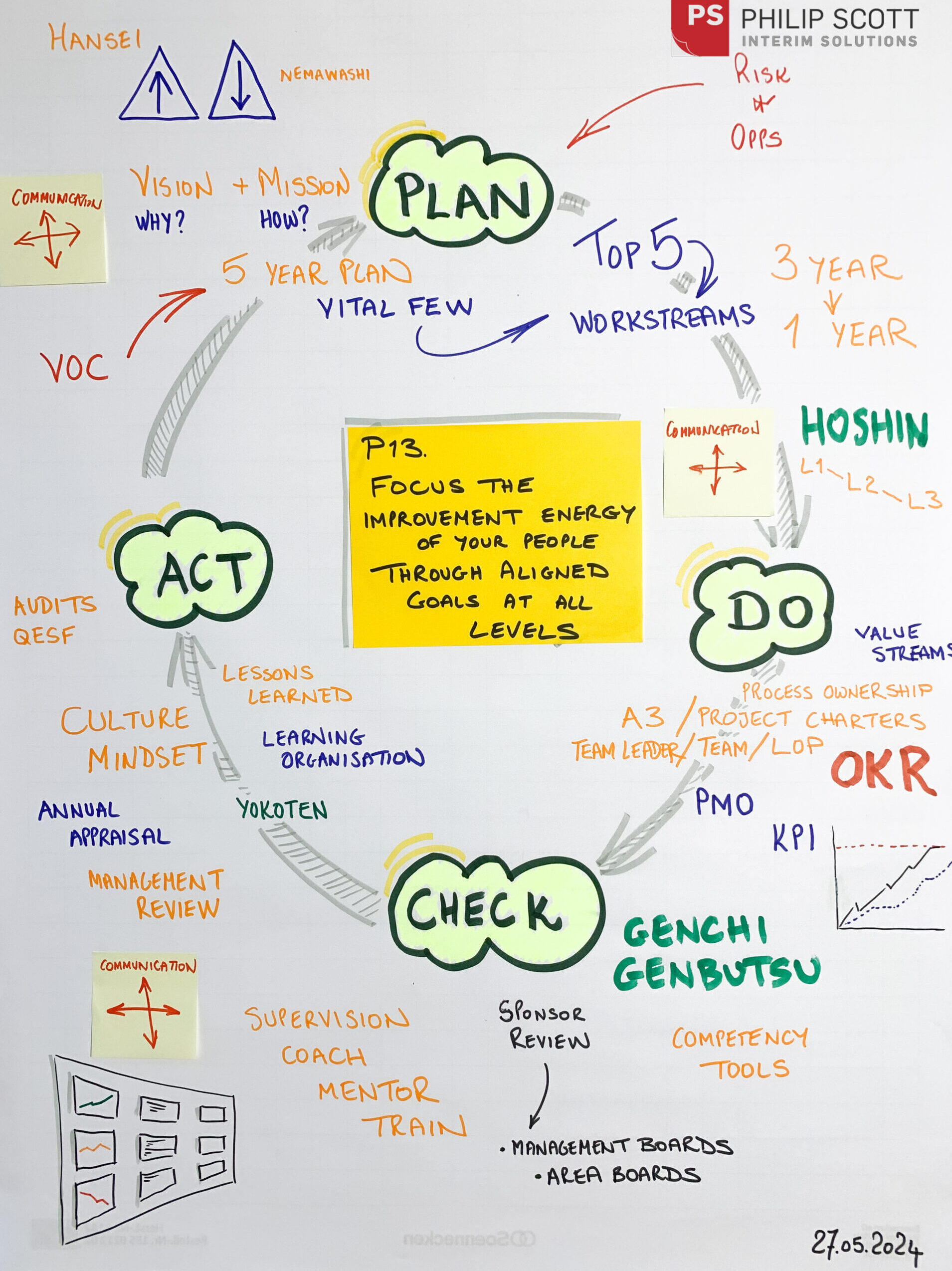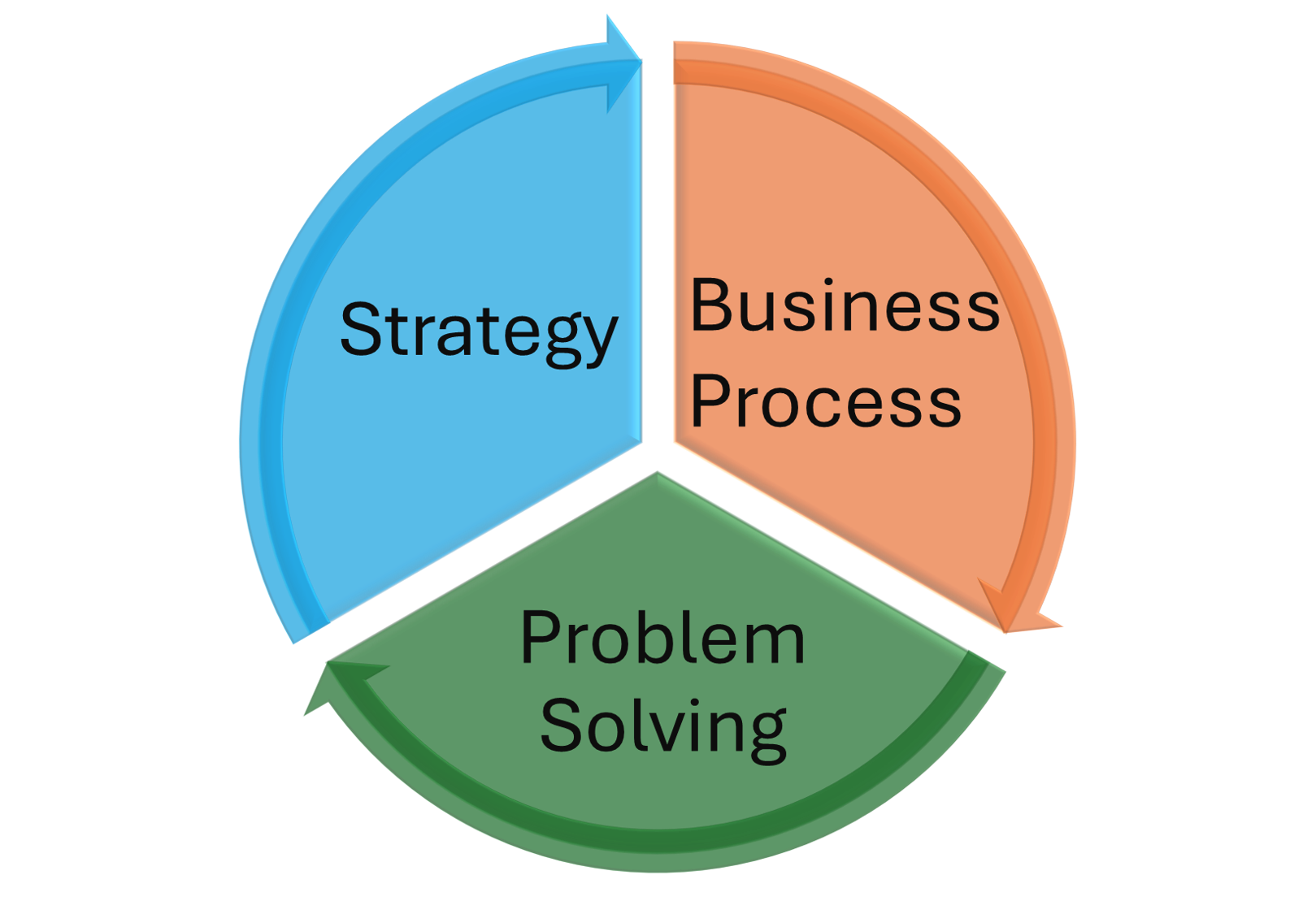BLOG #8 – May 2024
Focus improvement Energy on aligned goals at all levels
Principle #13 of the Toyota Way: „Focus the Improvement Energy of Your People Through Aligned Goals at All Levels“
This principle emphasizes the importance of aligning goals across all organizational levels to enhance the improvement efforts of your team. Over the years, I have found that there is always room for improvement in planning and policy deployment. By continuously learning how to better engage the organization, we can optimize this process. The PDCA (Plan-Do-Check-Act) cycle, as outlined in the IATF16949 / ISO9001 standards, should serve as the backbone of policy deployment. However, it should also incorporate the cultural and human elements of the Toyota Way.
PLAN
A crucial element is focusing the improvement energy, a concept often undervalued in today’s lean organizations. Although an organization may have numerous development, improvement, or establishment goals, there is limited time and energy for activities outside daily operations. The first critical step is to secure alignment from the bottom up, mid-year, on the proposed direction and priorities for the coming year. This iterative process is essential for gaining genuine buy-in and support from the organization for the few vital priorities. Proper assignment of team leaders and members based on availability and competence is necessary—not just listing names on paper. It is vital that annual goals, projects, and initiatives are well-known so that at least the top three organizational levels understand their expected contributions.
DO
Once policies, objectives, and improvement priorities are established, they should be deployed in a transparent and structured summary or matrix familiar to the organization. Departments, entities, value streams, and process owners can then detail their local measurable objectives within their scope of responsibility. It is important to do this before and during the budgeting process. These objectives should also influence personal objectives, aligning quickly after the end-of-year personal appraisal process to ensure accountability. Deployment of objectives should involve basic project management and problem solving. An A3 document serves as a practical „project charter,“ summarizing the team, team leader, scope, KPIs, problems, solutions, and action plans in an easily adjustable format.
CHECK
Visibility of progress, reporting, coaching, management supervision, and recognition are all essential. Having a large room with boards presenting A3 summary sheets to visually track progress of the main objectives is very effective. These boards should reflect the responsibilities at different levels, from executives to the Gemba. A good practice to ensure ultimate transparency and understanding is to have a central board showing the cascade of annual objectives, with names and responsibilities for each element.
ACT
I strongly advocate conducting a classic (quality) management system review before the budgeting and planning process for the following year begins. This review pulls together key inputs such as the cost of poor quality, process and product KPIs, process effectiveness (audit results), customer satisfaction, and performance of all processes. It also includes the achievements of previously agreed objectives and new lessons learned. The conclusions of the management review must be given priority in the next planning cycle.
By continuously refining this planning and deployment processes and focusing on the alignment and energy of the organization, we can drive sustained improvement and achieve our strategic goals effectively.


